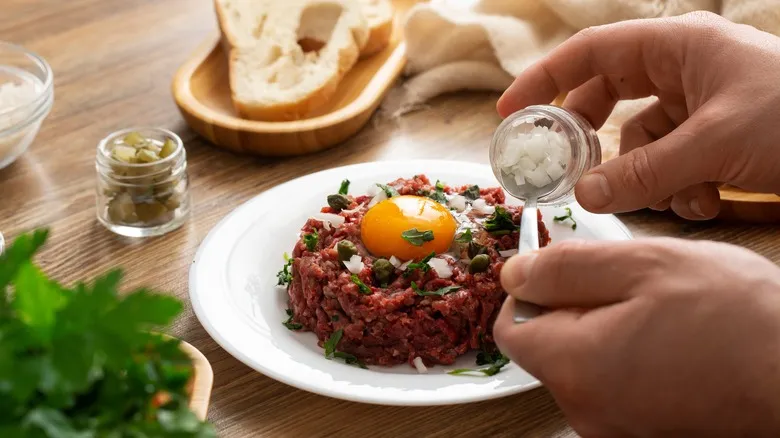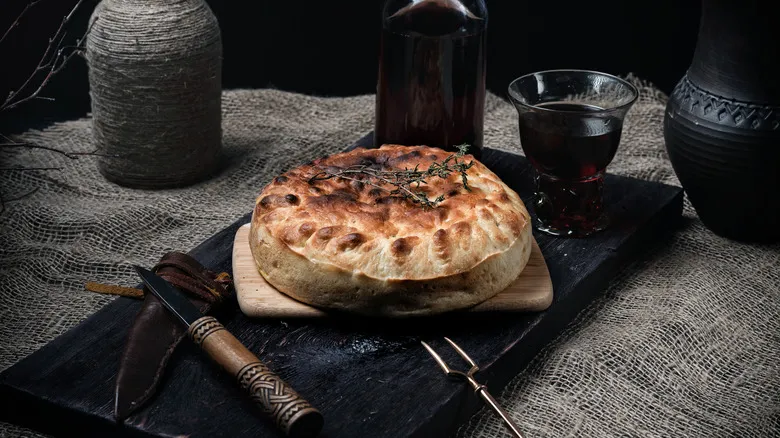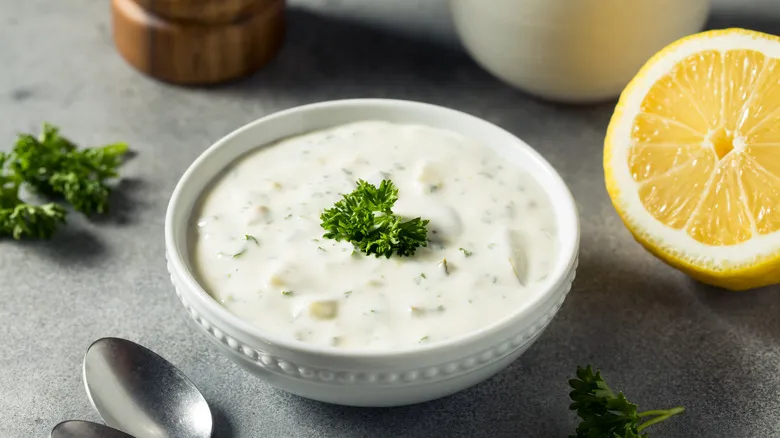Tartar sauce took its name from steak tartare

Steak tartare has become a common fixture on restaurant menus today. A typical serving features raw, minced beef formed into a loaf, expertly seasoned with aromatic herbs, capers, pickles (like dill pickles, gherkins, or cornichons), and Worcestershire sauce. It is often topped with chopped shallots and a fresh egg yolk for garnish. However, steak tartare hasn't always been so elaborate. In Fannie Merritt Farmer's "Boston Cooking-School Cookbook," published in 1896, the recipe called for just salt, pepper, and a splash of either A.1. or Worcestershire sauce, resulting in a rather bland dish.
What it truly needed was acidity. To address this, some inventive minds in the 19th century created "sauce à la tartare," a tangy sauce made from a mayonnaise base, vinegar (though we often use lemon juice today), and zesty herbs like tarragon and parsley. The original creator remains unknown, but it is likely of French origin, as they are credited with inventing mayonnaise, a key ingredient in tartar sauce.
By the mid-19th century, this sauce had gained popularity, appearing in Eliza Acton's 1860 cookbook, "Modern Cookery for Private Families." In her recipe, she described it as a remoulade (a cold mayo and herb sauce similar to tartar sauce) enhanced with additional mustard, tarragon vinegar, chopped shallots, capers, pickles, and cayenne pepper.
The faint, contentious connection to the Tartars

Although tartar sauce derives its name from steak tartare, the latter actually takes its name from the Tartar people. In her 1998 book "Rare Bits: Unusual Origins of Popular Recipes," Patricia Bunning Stevens recounted a tale suggesting that the dish was named after the Tartar warriors who were part of Genghis Khan's powerful army. According to Stevens, instead of cooking their meat, the Tartars would place it on their saddles, allowing it to tenderize through friction as they rode across the steppes.
This may sound intriguing, but it’s likely just a myth. The story probably originates from Jean de Joinville, a French historian and writer from the 13th century, who portrayed the Tartars (whom he referred to as "Mongols") in a negative light. He described them as "barbaric" individuals whose diet consisted solely of raw meat and milk. Interestingly, the Croatian Journal of Ethnology and Folklore Research suggests that de Joinville likely never encountered a Tartar in his lifetime.
Today, the term "tartare" remains associated with the Tartars in many cookbooks and food history references, indicating a slight connection between tartar sauce and the Tartar people. However, it’s important to remember that this association is rooted in a rather offensive and probably inaccurate stereotype, so it might be best to leave it unmentioned.
Recommended

Here's What The World's Oldest Pie Tasted Like

This Palermo Cloister Uses Centuries-Old Secrets To Make The Most Delicious Pastries

How Fish And Chips Became Britain's Defining Street Food

The Invention Of Kraft Singles Changed The Cheese World
Next up

